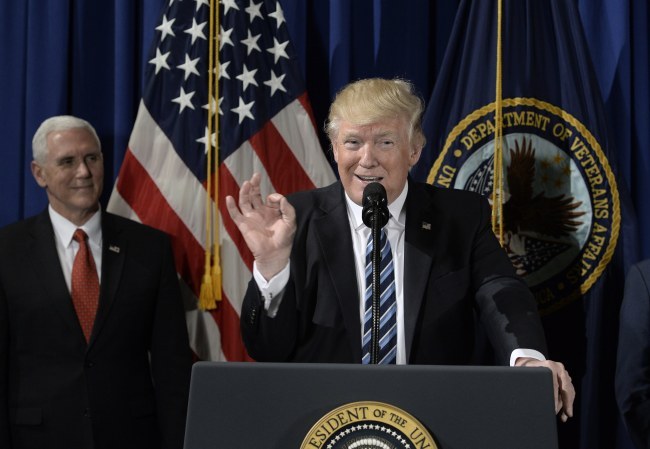Murray Hooper execution: Arizona hides death chamber from the press.
If Arizona executes Murray Hooper on Wednesday as planned, a representative of the state’s leading newspaper will not be there to witness it. Last week the Arizona Department of Corrections denied the Arizona Republic’s request to have one of its reporters serve as a witness to Hooper’s execution. This is the third time in the last six months that the newspaper has been denied access to an Arizona execution.
Since America’s last public execution in 1936, the press has served as the public’s eyes and ears when the state kills. Denying press access means that the American people cannot know what the state does when it puts someone to death in our name.
As Jolie McCullough, a reporter for the Texas Tribune, observes, “Reporters have always been present at executions to observe the state as it wields its greatest power over life. Media reports often provide detail excluded from state records—like prisoners describing a burning sensation after lethal drugs are injected in their vein. Reporters across the country have served as watchdogs for botched executions.”
Yet the courts have not recognized a constitutional right for the press to be present when the state carries out a death sentence.
Going back as far as 1890, the Supreme Court has upheld state bans on both media and public access to executions. At that time, the court granted wide latitude to states in setting the conditions under which executions would be carried out and recognized their right to exclude anyone from being present.
As the court said, “Whether a convict, sentenced to death, shall be executed before or after sunrise, or within or without the walls of the jail, … and whether the enclosure within which he is executed shall be higher than the gallows, thus excluding the view of persons outside, are regulations that do not affect his substantial rights.”
Advertisement Advertisement Advertisement AdvertisementThe same observation, the court continued, “may be made touching the restriction … as to the number and character of those who may witness the execution, and the exclusion altogether of reporters or representatives of newspapers. These are regulations which the legislature, in its wisdom, and for the public good, could legally prescribe.”
More than 80 years later the court ruled that the press has “no constitutional right of access to prisons or their inmates beyond that afforded the general public.”
Driving this point home, Judge Michael Hawkins of the U.S. Court of Appeals for the 9thCircuit wrote in a 1998 opinion, “Whatever First Amendment right might exist to view executions, the ‘right’ is severely limited.”
As a result, government officials get to decide who can witness an execution and what they can see. This power is codified in regulations or in execution protocols which often give complete discretion to state departments of corrections to choose media witnesses.
AdvertisementAs the Arizona case illustrates, that discretion can easily be abused to punish news outlets for unfavorable coverage.
At a time when problems in executions are mounting, it is more important than ever for courts to carefully scrutinize how that discretion is exercised and ensure that members of the press are not arbitrarily denied access to executions.
AdvertisementLet’s look at Arizona’s decision to exclude the Arizona Republic from Hooper’s execution as an example of the danger of unfettered discretion.
Arizona’s execution protocols say that the director of the Department of Corrections shall invite “five official media witnesses selected as representatives, from media-print, television/cable, radio, and the local market where the crime occurred. These official media witnesses shall also agree to serve as pool reporters.”
AdvertisementBut its execution protocol offers no guidance as to who those media witnesses should be or how the director should go about choosing them. Nor do they require him to provide an explanation for any decisions he makes.
AdvertisementUntil recently, a representative of the Arizona Republic was regularly present at state executions because that newspaper has long had the largest circulation in the state.
All that changed after it published stories criticizing the procurement process for execution drugs and rampant corruption in the state’s prison health care system.
Last May, when the Republic was excluded from the witness list for Clarence Dixon’s execution, Greg Burton, its executive editor, contacted the governor’s office to ask for an explanation.
AdvertisementPopular in News & Politics
- Sure Sounds Like the Supreme Court Is About to Give Trump a Big Win!
- Trump Has Always Been a Caricature of a Particular Type of Villain. It’s on Full Display Right Now.
- Why Would a Republican Brag About Shooting Her 14-Month-Old Puppy Dead? Well …
- The Anti-Defamation League Has Become a Threat to Jewish Safety
As Burton recounted in the paper, “I reached out to Gov. Ducey to let him know that his agency is playing games with a process that could not be more grave – and legally prescribed. His chief of staff, Daniel Ruiz, just scoffed.” Burton also said that “Ruiz told him if The Republic did not print ‘false information,’ the news organization might be treated differently.”
Advertisement AdvertisementLimiting press access to executions or favoring some media outlets over others is not just an Arizona phenomenon.
All over the country, death penalty states recently have imposed restrictions on what parts of an execution media representatives may see. Moreover, since the start of the COVID pandemic, death penalty states like Alabama have limited the number of media witnesses who can be present at executions.
AdvertisementIn May 2021, no press representative was present when Texas executed Quintin Jones. Reporters were on the premises at the state penitentiary in Huntsville where he was executed, but they were never brought to the room where they could view the proceedings.
State officials denied that the exclusion of the press was intentional. As the Texas Tribune reported, they claimed that the error “resulted from a miscommunication between prison officials.”
From the Tribune:
Typically, when an execution is set to proceed, prison officials call the press office across the street, and the spokesperson walks the reporters over. He said that call never came.
Whether intentional or not, limits on press access to executions impede the public’s right to know if executions are carried out fairly and humanely.
Punishing newspapers like the Arizona Republic for the stories they publish is a tactic long familiar in the playbook of authoritarian nations. And since Donald Trump’s 2016 presidential campaign, labeling unfavorable coverage as “fake news” has become a weapon in American politics.
Neither should be acceptable in a free society, especially when the government wields its ultimate power, the power over life and death.
Tweet Share Share Comment(责任编辑:资讯)
- ·The Techies Who Lunch
- ·Over 1,200 S. Korean separated family members died in Q1: data
- ·Garcia 'not scared' of replacing Spalletti at Napoli
- ·We're watching the return of the tears of joy emoji
- ·Europe now has a huge AI gap, for better or for worse
- ·Twitter now lets you make GIFs out of iOS Live Photos
- ·O'Callaghan wins 100m free in year's fastest time
- ·《猪业战争》新书众筹启动!彭进:中国养猪业正在经历一场战争!
- ·水产品占“四席”!广州南沙十个农产品上榜“国字号”
- ·Facebook waited two weeks to tell employees payroll data was stolen
- ·Cicadas love to land on people. Experts explain why.
- ·New geothermal battery directly converts heat to electricity
- ·We're watching the return of the tears of joy emoji
- ·Fan experience at Champions League final was 'not perfect'
- ·Google Gemini now allows AI
- ·How to safely meet up on a Tinder date
- ·Inky violence ensues when a post
- ·Netflix is paying to advertise on your Roku remote and you don't even know it
- ·Tesla issues recall for 9,100 Model X cars
- ·夏季,焦虑、抑郁的高发季节













